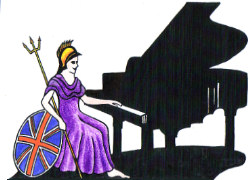Teachers, Accompanists and Piano Entertainers in the UK

UK Piano Page

Browse Locations England » Cheshire » Altrincham
28 Stamford New Road
Altrincham, Cheshire WA14 1EJ
England
If you are not near to a Dawsons store, you can still have access to over 15,000 top brand products. Just call our mail order department or log onto ...
Unit 2
Europa Enterprise Park
Midleton, County Cork
Republic of Ireland
We can supply all makes of new and reconditioned
37 Ranelagh Street
Liverpool, Merseyside L1 1JP
England
Dawsons caters for all musical styles and for all
Knightley Farm Workshop
Callingwood
Burton-on-Trent, Staffordshire DE13 9PU
England
Drayton Mill
Stourbridge, Worcestershire DY9 0BT
England
Broughton Pianos have been trading for over 30
9 Rothersthorpe Avenue
Rothersthorpe Ind. Estate
Northampton, Northamptonshire NN4 8JH
England
LSM Pianos Ltd. was established back in 1979. We
Music Festival for performers and guests Our 10th
18-06-2022 12:30PM
The Morecambe Bay Piano Group was set up to extend
11-12-2021 01:00PM
The Morecambe Bay Piano Group was set up to extend
08-01-2022 01:00PM
The Morecambe Bay Piano Group was set up to extend
12-02-2022 01:00PM